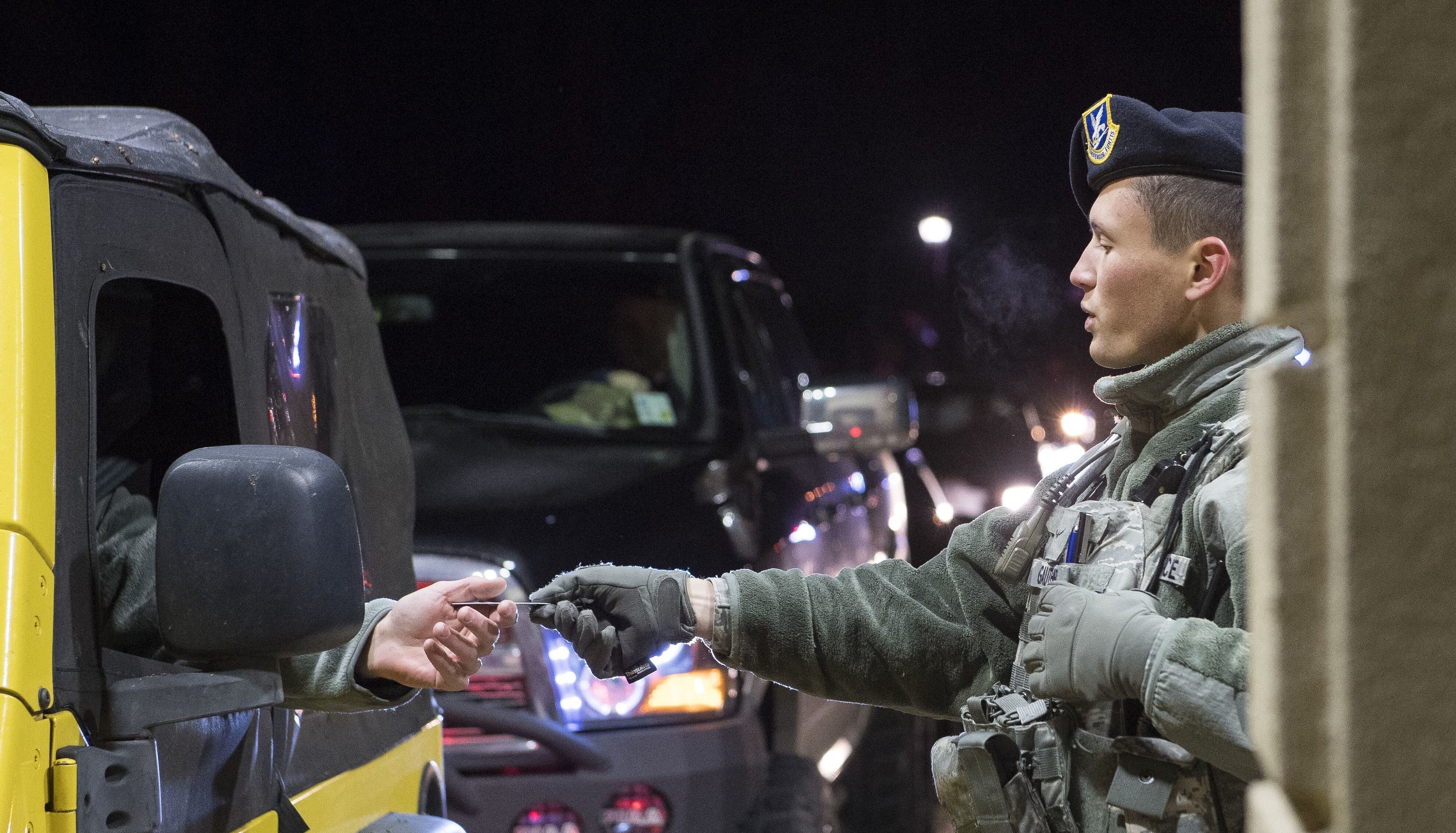Facial recognition using artificial intelligence may be coming to the gates at Air Force bases in the near future.
The idea was put forth in January as part of an innovation campaign the Air Force started to crowd-source ideas from its airmen.
Facial recognition could be of benefit to base defenders who often must manually sift through photos and video feeds of interlopers near military installations, according to Lt. Col. Carlos Hernandez, who submitted the proposal.
“We had a perceived uptick in gate runners at different bases worldwide,” said Hernandez, a section commander at the Air Force Security Forces Center at Joint Base San Antonio-Lackland, in a news release. “I just kept thinking about our processes and the approach we’re taking in responding to these types of situations. As such, I started to wonder if we could approach the problem from a proactive lens rather than reactive.”
Facial recognition works by identifying and sometimes verifying a person from a digital image or a video frame by matching facial features against a database of images. In this way, the technology works similar to other biometric scans like fingerprinting.
Facial recognition is sometimes seen as non-invasive for travelers. In the case of people wandering around remote air bases, it could also identify individuals who were never met and questioned by security forces on the ground. However, it’s not without its ethical complications, not the least of which is how the technology encourages the facial scanning of people suspected of no crime and entering that information into a database.
The idea was chosen as one of eight finalists to be presented at the “Innovation Rodeo," an Air Force event, sponsored in part by AFWERX, beginning Friday in San Antonio.
“We want to transition those ideas into the innovation ecosystem and AFWERX challenges so we can get those ideas into prototype and then the implementation phase," Marc Vandeveer, the Air Force Installation and Mission Support Center’s chief innovation officer, said in the release.
RELATED
Air Force base defenders upgrade weapons, training and fitness standards to meet near-peer threats
The facial recognition proposal would be meshed with what private industry has already developed and fielded to border control points and international airports.
Army Research Lab scientists have also developed technology that pairs artificial intelligence and machine learning to flesh out a face from the thermal image seen on many weapons sighting systems.
Col. Jeffrey York, 31st Mission Support Group commander at Aviano Air Base, Italy, also noticed the need for facial recognition at U.S. air bases after traveling abroad and noticing an increase in the use of the technology at points of entry in the U.S. and several European countries.

“When we were looking for ideas to improve access control and assist defenders, the idea of leveraging the technology of facial recognition used for border security seemed to be a natural area to explore,” York said in the release, noting that it was a collaborative effort.
“Aviano [Air Base]," he added, “was facing the same challenges and concerns as other bases with respect to base security and the risk of unauthorized access.”
The U.S. already has facial recognition scanning in effect, mostly using driver’s licenses and ID photos. Roughly 50 percent of American adults are already in a law enforcement facial recognition network, according to a report by Georgetown University researchers entitled “Perpetual Lineup."
“At least 26 states (and potentially as many as 30) allow law enforcement to run or request searches against their databases of driver’s license and ID photos,” the report reads.
The technology has the potential to drastically reduce the workload of security forces airmen defending U.S. air bases, but it could also provide complications with the local communities those troops live among if it’s used along base fence-lines and not restricted to a gate.
At many Air Force installations, a popular activity is watching takeoffs and landings around the runways. The idea of being subject to facial scans during leisure activities near bases may be unappealing to some aircraft watchers.
Watching the long, snaking fence-lines of air bases is necessary, however, as exemplified by the arrest of a Chinese student who pleaded guilty to illegally taking photos of a U.S. military air installation in the Florida Keys.
The student was sentenced to a year in federal prison after he walked into a restricted zone in September and took photos of sensitive areas and military hardware surrounding the Key West Naval Air Station.
Kyle Rempfer was an editor and reporter who has covered combat operations, criminal cases, foreign military assistance and training accidents. Before entering journalism, Kyle served in U.S. Air Force Special Tactics and deployed in 2014 to Paktika Province, Afghanistan, and Baghdad, Iraq.








